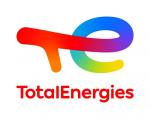Brand your application and become THE candidate in the eyes of recruiters!
Author: Bérénice Kimpe (Head of International Department)
Becoming the product that everyone is clamoring for is not a coincidence but the result of an effective marketing strategy. Do you think Nespresso coffee machines would have been as successful without George? So why not apply the basic marketing rule to your own applications?
This rule is the marketing mix, or the 4 Ps: product, promotion, place, price. These four elements have a significant impact on the consumer's purchase decision. The same goes for the application process: the purchase decision will be your recruitment, the consumer the recruiter and the product... you!
1 / Establish your characteristics (Product)
A good marketing strategy is often focused on the product that is going to be launched on the market. It is therefore necessary to know its characteristics and qualities, to know what it has more than its competitors, in order to be able to develop the sales pitch that will hit the mark with consumers. All this information (technical data, design, functionalities, available models and accessories, dimensions...) will be recorded on a technical data sheet, the product sheet.
For example, your product sheet will be a table in which you will note everything that characterizes you: your training, your areas of expertise, your professional and associative experiences. For each one, you will specify your missions, responsibilities, tasks carried out and related skills. Also highlight your competitive advantage, in other words your specific skills, your added value.
Be as precise and exhaustive as possible, this will facilitate the development of your promotion.
There are different segmentations for the same market. On the clothing market, for example, you find sportswear, made-to-measure, large sizes, haute-couture... And for each market segmentation corresponds one or more consumer targets.
It's up to you to find yours! On which sectors of activity do you want to position yourself? Which functions and professions are of interest to you and correspond to the characteristics of your product sheet? What would your potential consumers be: a public, private or international structure? Small, medium, large? If you plan to export, which foreign customers would be suitable?
Don't forget to do your SWOT analysis (strengths, weaknesses, opportunities, threats) to check the accuracy of your positioning in relation to the chosen segments and the demand for your product: analyse on the one hand internal factors such as your strengths (your knowledge of the field, your skills, your experience, the rarity of your profile...) and your weaknesses (missing skills, limited experience...). Also identify the external factors that represent your opportunities (those that exist when you browse job boards and those that you will create through your network) and your threats (such as a targeted sector that is losing momentum or very strong competition for recruitment).
2/ Create communication tools adapted to your positioning (Promotion)
A product may be great, but it will not be commercially successful if there is no strong and effective communication around it. It can be done in different ways: classic (advertising brochure for example), viral (buzz, word of mouth)... The channels used for this communication as well as the content vary according to the targeted audience: if a product is aimed at a young audience, social networks will be used massively to reach them and a language, visuals and references corresponding to their codes.
You too, as a professional product, need to communicate about yourself! You also have all these means at your disposal: classic communication (CV, cover letter), viral communication (recommendations from your network for example). Don't neglect your presence on social networks, this will increase your visibility with recruiters (to learn more about how to optimize your digital identity, see the following article).
Finally, adapt your communication tools (CV, cover letter, LinkedIn profile, presentation pitch for the interview...) to the codes of your target audience. The CV for the economic sector is built differently from the academic CV: it is an advertising document that holds on one page, so the number of your UMR and the complete list of your publications have no place there! Use the vocabulary used by your target: if you are responding to a job offer, replace the key words of the advertisement judiciously in your CV and cover letter. If you have chosen to export, remember to adopt the codes of the target country: the German CV, for example, does not have a title and the photo has an important place.
Don't forget that a product, in order to sell well, must meet a need: in your case, your application, whether in response to an ad or spontaneous, must absolutely meet a current need of the recruiter. Your sales pitch, which can be found in both your CV and cover letter, must contain only the relevant information you have selected from the elements of your product sheet.
3/ Use the different distribution channels (Place)
A product can only be sold if it is available in selected points of sale, whether physical (stores) or virtual (online sales). The distribution channel for the product may be short, i.e. without an intermediary between the consumer and the producer, or long (presence of one or more intermediaries).
The same applies to the application process: you can make direct contact with the recruiter (at job fairs or trade shows, for example) or go through an intermediary, which may take the form of a recruitment agency or a member of your network and its connections. The two options are complementary!
As for your points of sale, they are also material and virtual: the office of the person who will receive you for a recruitment interview, the job forums that you will visit, the "career" portal of targeted employers, the CV libraries in which you will deposit your CV, social networks...
Don't neglect any means of making yourself known to employers and take care with your presentation to make them want to recruit you.
4/ Define your monetary value (Price)
The question of the selling price of a product about to be launched on the market is crucial: it must not be too low so as not to arouse consumer mistrust of the quality of the product, nor too high so as not to inhibit the act of purchase.
For you too, the question of your monetary value on the job market arises: what level of salary can you expect? A thorny question, if there is one... To help you, consult job offers similar to the position you are targeting and look at the salaries offered. Surveys on the future of doctors or studies on remuneration carried out by consulting firms also provide information (Deloitte in France or Alma Mater in Germany, for example).
As you will have understood, marketing is above all a question of image and in the case of the application process, it comes down to asking yourself what image you want to convey to recruiters. However, be careful not to overdo your image, misleading advertising can be fatal!
Finally, also keep in mind that the decision to buy (and therefore to recruit) is not only rational: there is such a thing as a "crush" too!
Get ABG’s monthly newsletters including news, job offers, grants & fellowships and a selection of relevant events…
Discover our members
 Nokia Bell Labs France
Nokia Bell Labs France  CASDEN
CASDEN  Ifremer
Ifremer  ASNR - Autorité de sûreté nucléaire et de radioprotection - Siège
ASNR - Autorité de sûreté nucléaire et de radioprotection - Siège  Groupe AFNOR - Association française de normalisation
Groupe AFNOR - Association française de normalisation  Généthon
Généthon  SUEZ
SUEZ  Tecknowmetrix
Tecknowmetrix  ADEME
ADEME  Institut Sup'biotech de Paris
Institut Sup'biotech de Paris  PhDOOC
PhDOOC  MabDesign
MabDesign  ONERA - The French Aerospace Lab
ONERA - The French Aerospace Lab  CESI
CESI  TotalEnergies
TotalEnergies  Laboratoire National de Métrologie et d'Essais - LNE
Laboratoire National de Métrologie et d'Essais - LNE  MabDesign
MabDesign  ANRT
ANRT  Aérocentre, Pôle d'excellence régional
Aérocentre, Pôle d'excellence régional





